DAVAO CITY (MindaNews / 27 Nov) – More than halfway into President Rodrigo Duterte’s six-year term, the dream train that he promised to build in Mindanao, potentially using Official Development Assistance (ODA) from China for the first phase, has yet to gain steam.
The development of a railway facility in the south failed to take off in the past 50 years spanning six presidents until the then Davao City mayor revived it as a campaign promise in the 2016 presidential race.
Duterte, the country’s first president from Mindanao whose term will end on June 30, 2022, formally identified the Mindanao railway as one of the government’s priority infrastructure projects during his first State of the Nation Address on July 25, 2016.
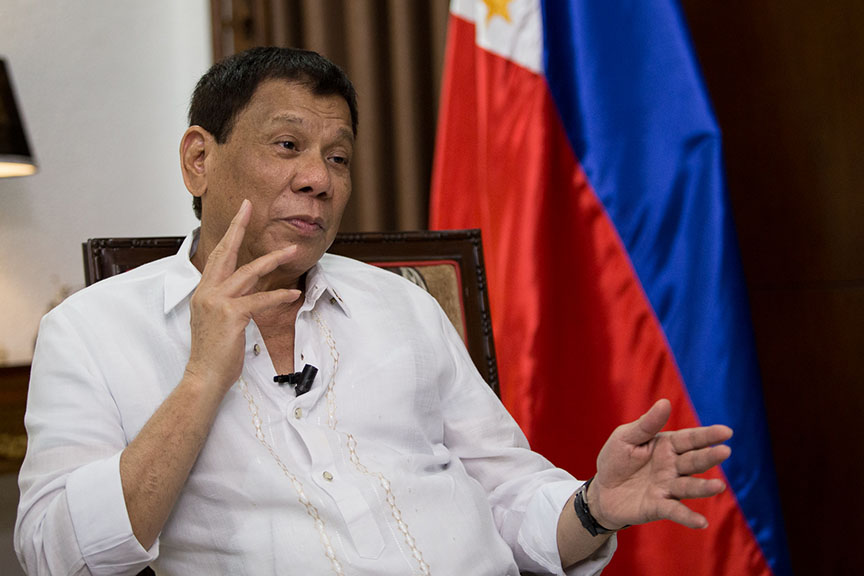 President Rodrigo Duterte during a sit-down interview with MindaNews’ Carolyn O. Arguillas on January 12, 2018 at the Agila Room of the Presidential Guest House in Panacan, Davao City. MindaNews file photo by MANMAN DEJETO
President Rodrigo Duterte during a sit-down interview with MindaNews’ Carolyn O. Arguillas on January 12, 2018 at the Agila Room of the Presidential Guest House in Panacan, Davao City. MindaNews file photo by MANMAN DEJETO
But three years on, not a single hole had been dug for the ceremonial groundbreaking rites usually afforded to big-ticket projects.
For Mindanao, the railroad was a long-time dream to link people, goods and services in the growth areas of the country’s second largest island.
China has committed to fund Phase 1 of the Mindanao Railway Project (MRP), an offshoot, among others, of the warming bilateral ties between the two countries following Duterte’s pivot to Beijing months after assuming power in 2016.
The MRP’s Tagum-Davao Digos (MRP-TDD) segment, stretching 102 kilometers, was supposed to start last year but design changes delayed the target.
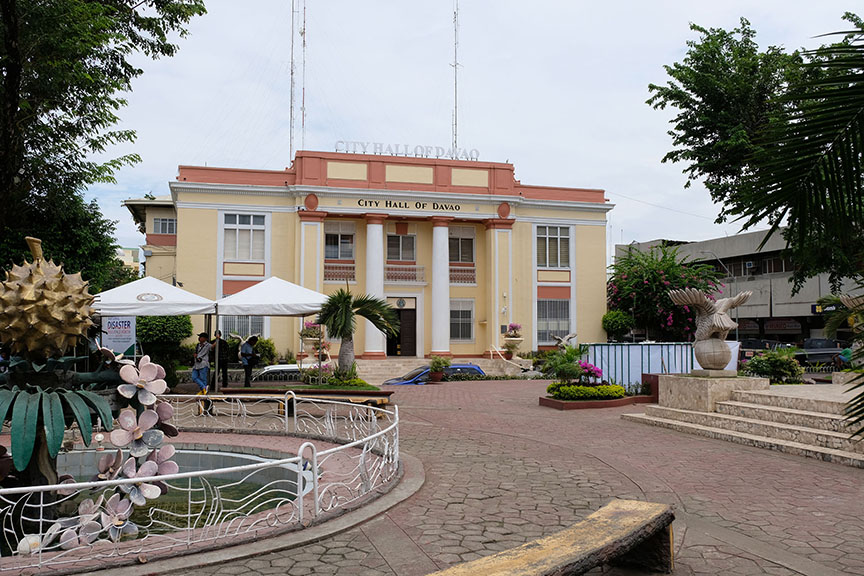 The city hall of Davao City, which will be traversed by the first phase of the Mindanao Railway Project. MindaNews photo by BONG S. SARMIENTO
The city hall of Davao City, which will be traversed by the first phase of the Mindanao Railway Project. MindaNews photo by BONG S. SARMIENTO
The National Economic and Development Authority (NEDA) board, chaired by Duterte, approved the project in 2017 with a cost of P35.9 billion.
Last July, the Interagency Coordinating Committee-Cabinet Committee (ICC-Cabcom) approved a proposal more than doubling the MRP-TDD cost to P82.9 billion due to design changes.
New construction target set in 2020
According to the Department of Transportation (DOTr), the groundbreaking of the MRP-TDD, due to the bidding and ODA funding process, “may commence within the first quarter of 2020 and could be partially operated in February 2022.”
“As discussed during a project coordinating meeting, it is very likely that the design and build contract can be awarded around the end of January 2020,” Eymard Eje, DOTr Assistant Secretary for project implementation-Mindanao cluster, told MindaNews.
In an email, Eje said they expected the ODA loan agreement with China to be signed by March or April 2020.
Citing the bid document as of August, Eje said the winning contractor is required to partially operate (PO) the MRP-TDD segment 24 months after the notice to proceed is granted.
“This should enable the operation of the PO section before the end of the Duterte administration in June 2022,” he said.
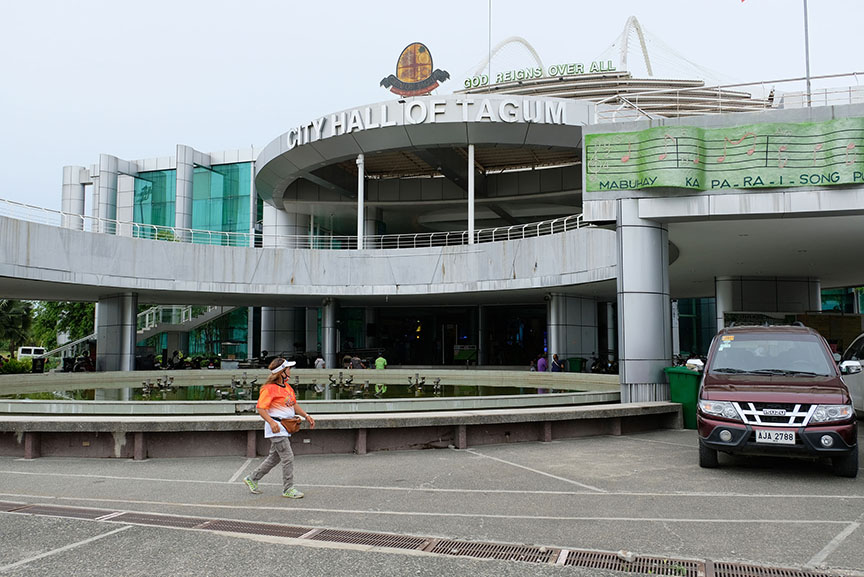 The city hall of Tagum, Davao del Norte, which will be traversed by the first phase of the Mindanao Railway Project. MindaNews photo by BONG S. SARMIENTO
The city hall of Tagum, Davao del Norte, which will be traversed by the first phase of the Mindanao Railway Project. MindaNews photo by BONG S. SARMIENTO
Design changes
Based on the original feasibility study, which the NEDA commissioned to a local joint venture composed of Schema Konsults, Inc., Engineering & Development Corporation of the Philippines, and Pacific Rim Innovation & Management Exponents, Inc., the MRP-TDD segment would be constructed as a single-rail track and diesel-run train.
A study conducted by consultants of the Asian Development Bank in 2018 increased the cost to P80 billion with the upgrading to a modern dual track, electricity-run railway and due to additional structures such as viaducts and bridges.
Eje added that after further evaluation by the Arup Ove & Partners Hongkong Ltd., the cost was pegged at about P83 billion, which the ICC-Cabcom approved.
The higher cost was due to further changes in the civil and structural work for the slopes and embankments and the incremental cost on fixed items such as engineering, project management consultants and project management teams, he explained.
Chinese contractors
With China funding the MRP-TDD, it will also have the power to recommend the developers to join the bidding.
Eje identified the state-owned Chinese firms that so far signified interest to construct the MRP-TDD as the China Railway International Group (CRIG) and China Civil Engineering Construction Corporation (CCECC).
CRIG is a subsidiary of China Railway Group Ltd., one of the Fortune 500 Global Companies, according to its website. China Railway’s core business is constructing railway infrastructure at home and abroad.
On the other hand, the CCECC, from being an international railway contractor, has expanded to project contracting, civil engineering design and consultancy, labor services cooperation, real estate development, and import and export trading as well. It has projects in over 50 countries in Asia, Africa, America and Oceania.
“It is the government of the People’s Republic of China that will nominate at least three Chinese contractors that will participate in the bidding for the MRP-TDD,” Eje disclosed.
He added that for this segment, the road right of way acquisition will affect some 1,900 landowners.
For his part, Li Lin, the Chinese consul general in Davao City, identified the China State Construction Engineering Corp (CSCEC) and the China Communications Construction Company (CCCC) as the two other Chinese state firms that are also interested to undertake the railway project.
 Davao Chinese Consul General Li Lin during an interview at the consulate office in Davao City. MindaNews file photo by GREGORIO BUENO
Davao Chinese Consul General Li Lin during an interview at the consulate office in Davao City. MindaNews file photo by GREGORIO BUENO
CSCEC constructed the rehabilitation centers donated by the Chinese government in the Mindanao provinces of Sarangani and Agusan del Sur, Li said.
CCCC, which also specializes in building highways and railways, is doing the feasibility studies for a bridge and expressway in Davao City, which are also both donations of the Chinese government, he added.
CSCEC, which tried but failed to bag the rehabilitation project for war-torn Marawi City, and CCCC have already established offices in Davao City, the official said.
Li said that tapping Chinese firms as potential developers forms part of the “package of agreement” that will go with the loans or donations Beijing would extend to Mindanao.
But he was quick to say that the Philippine government “could choose non-Chinese firms if it thinks they are better than Chinese companies.”
Li described the Mindanao railway “as one of the major cooperation projects between China and the Philippines,” following Chinese President Xi Jinping’s state visit to Manila last November.
With the Chinese leader’s visit, the bilateral relations between the two countries have been upgraded to “comprehensive, strategic cooperative relations,” Li said.
Duterte visited China for the fifth time in August, and raised the South China Sea row with Xi. This was the eighth time that the two leaders met since Duterte’s rise to power in 2016.
His latest visit to China paid off with a $219.7 million railway loan, but not for Mindanao but for the Philippine National Railways’ south long haul project in Luzon.
But Consul Li reiterated China’s commitment to fund the MRP-TDD, which will reportedly cover at least 80 percent of the total cost.
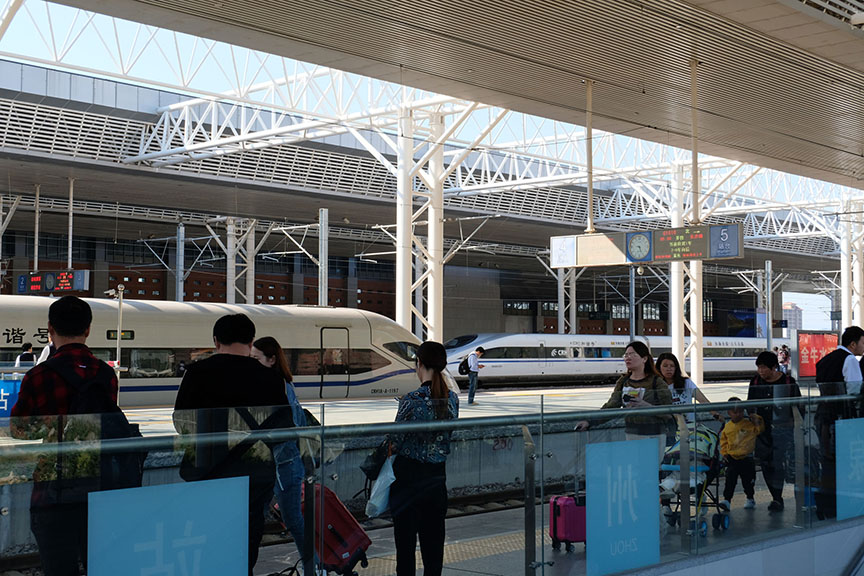 This Chinese fast train with a top speed of over 250 kilometers per hour, which could be replicated in Mindanao, was photographed at the Quanzhou Railway Station in Fujian province, People’s Republic of China on November 8, 2019. MindaNews photo by BONG S. SARMIENTO
This Chinese fast train with a top speed of over 250 kilometers per hour, which could be replicated in Mindanao, was photographed at the Quanzhou Railway Station in Fujian province, People’s Republic of China on November 8, 2019. MindaNews photo by BONG S. SARMIENTO
As of October 31, Li said he was informed by DOTr’s Eje that the feasibility study for the MRP-TDD had been completed and approved by the NEDA and DOTr.
The request for project cooperation from the Philippine government had been submitted to the Chinese government, Li added.
Should both sides reach an agreement, Beijing will provide a shortlist of at least three Chinese contractors to bid for the project, according to Li, confirming what Eje had disclosed.
The Chinese consul rejected fears that China is baiting the Philippines into a debt trap with the financing it would extend to various infrastructure projects not just in Mindanao but also in other parts of the country as part of Beijing’s ambitious Belt and Road Initiative.
“The Philippine government has the competence to pay back its debt… It is not an issue to worry about,” Li told MindaNews, noting the “soft loans will earn low interest rates.”
Abul Khayr Alonto, former secretary of the Mindanao Development Authority (MinDA), lamented the slow pace to start the construction of the dream railroad before he died last May due to an illness.
With only three years to go before Duterte’s term ends in 2022, Alonto had stressed early this year that “time is not on the administration’s side” given the failure to start construction works for the MRP-TDD.
Incumbent MinDA Secretary Emmanuel Piñol said “the bidding for the MRP-TDD is slated this November” and the groundbreaking and construction early next year.
“A group of Chinese engineering consultants is now preparing the ground work for the succeeding phases of the railway system,” he said in a recent Facebook post.
The MRP-TDD is just the first phase of the 2,000-km railroad that the government plans to establish across the island.
Barring any more delays, Eje, the assistant secretary at DOTr, which is spearheading the Mindanao Railway Project, said the partial operation of the MRP-TDD “would happen in February 2022.”
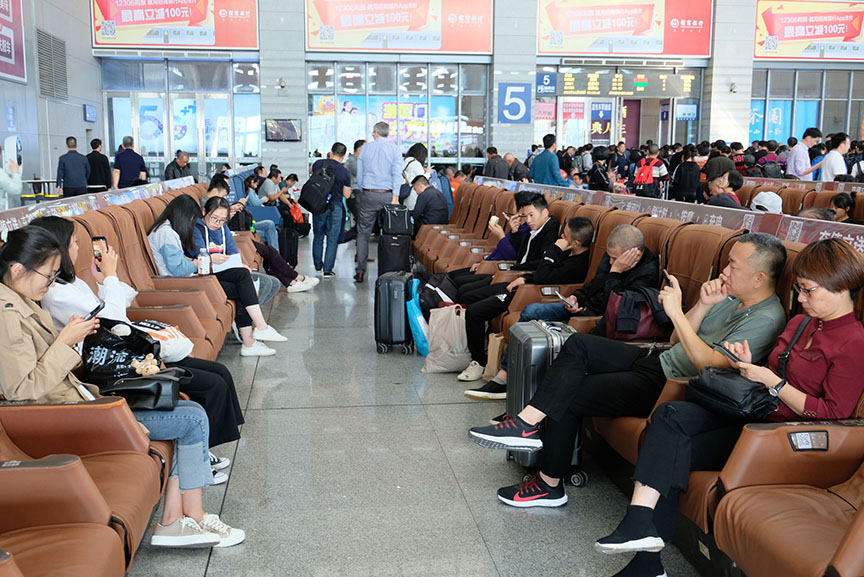 Commuters wait for their trip at the passenger terminal of the Quanzhou Railway Station in Fujian province, People’s Republic of China on November 8, 2019. MindaNews photo by BONG S. SARMIENTO
Commuters wait for their trip at the passenger terminal of the Quanzhou Railway Station in Fujian province, People’s Republic of China on November 8, 2019. MindaNews photo by BONG S. SARMIENTO
Once operational, the train will reduce travel time from the cities of Tagum to Digos, passing though Davao City, from 3.5 hours to 1.3 hours, DOTr data showed.
The agency expects the MRP-TDD to accommodate at least 134,000 daily riders.
As of posting, the government has not yet announced if a bidder was awarded the contract for the initial phase of Mindanao’s dream train project. (Bong S. Sarmiento / MindaNews)
